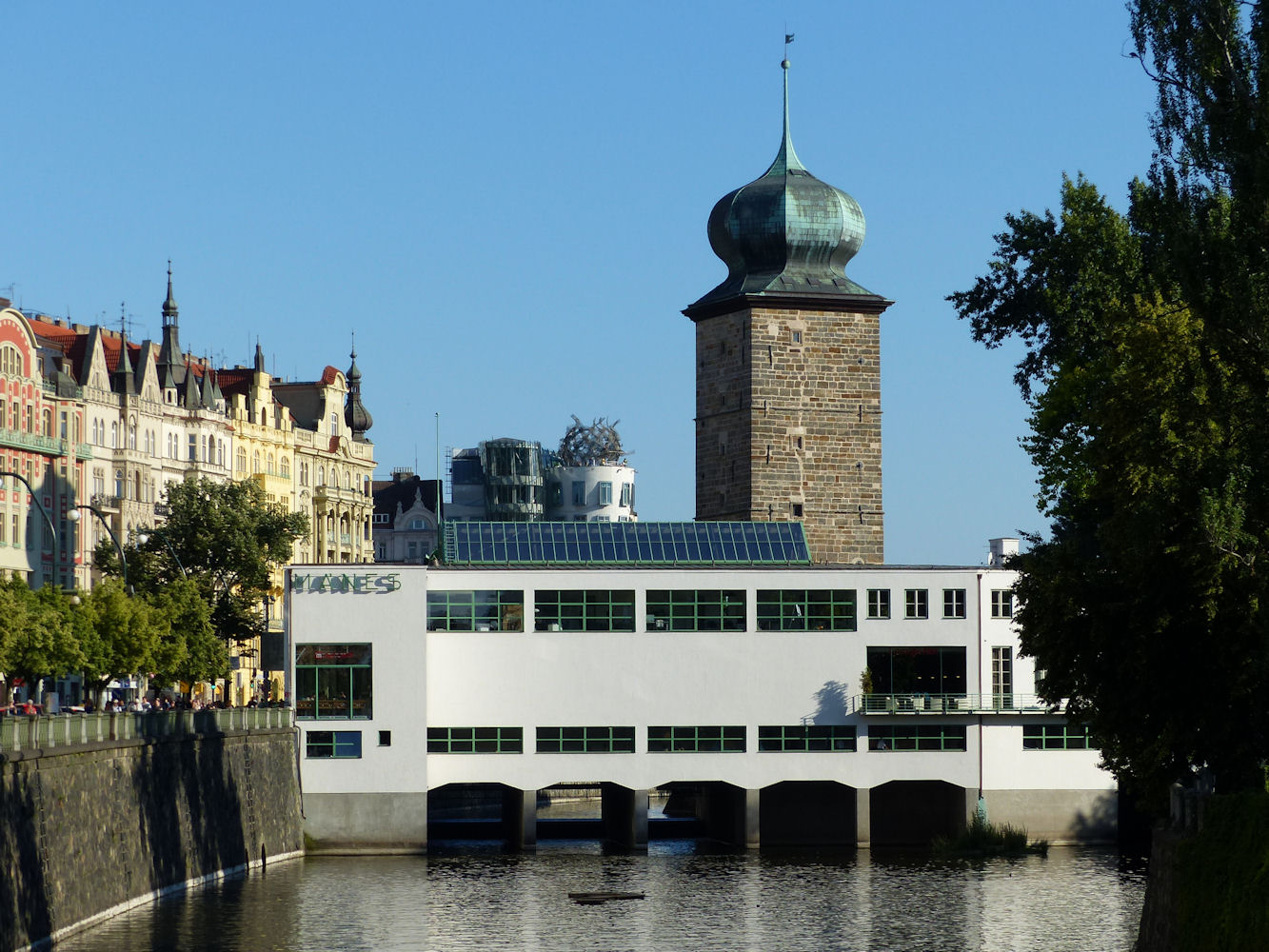Masarykovo nábřeží 250/1: Mánes Exhibition Hall
In 1887, a small group of Czech artists and writers came together to found the Mánes Society of Fine Arts. In the context of their country’s desire to break away from the Austro-Hungarian empire, ‘S.V.U. Mánes’ represented a new and patriotic direction, committed to ‘mutual cooperation in the way of serious and fruitful artistic endeavours.’
They chose the painter Mikoláš Aleš as their first president, and under his leadership the society (named after the nineteenth-century Czech painter Josef Mánes) rapidly grew into a substantial cultural and intellectual force. Its exhibitions and publications increasingly focused on the significance of wider European artistic movements, including the Viennese secession and French impressionism; and by 1902, when the architect Jan Kotěra introduced the work of Rodin to a Czech audience for the first time, Mánes found itself at the forefront of Czech national life.
By 1928, the need for a permanent home was evident. The society purchased a piece of the riverbank where a mill had once stood. It was Kotěra’s pupil Otakar Novotný who arrived at a strikingly modern proposal, joining the new exhibition hall via a bridge of reinforced concrete to the nearby island while ingeniously incorporating the renaissance water tower called, after the mill, ‘Šítkovská věž’ (Šítka’s tower). Glazed roofing and longitudinal windows, meanwhile, provided abundant light for the gallery’s interiors.
In comparison with the surrounding architecture, Novotný’s functionalist slab — its long white lines set in counterpoint to the black vertical of the water tower — must have seemed shocking on its completion in 1930. Even today it still has the power to surprise visitors to Prague’s historic centre.
Václav Havel, the dissident playwright-turned-president of the new Czech Republic, was a particular fan of Mánes as an independent artistic statement of faith. Intriguingly, Havel’s family apartment was close by; after the revolution of 1989 it was revealed that he had been spied on, throughout the communist period, from the onion dome of the water tower.









